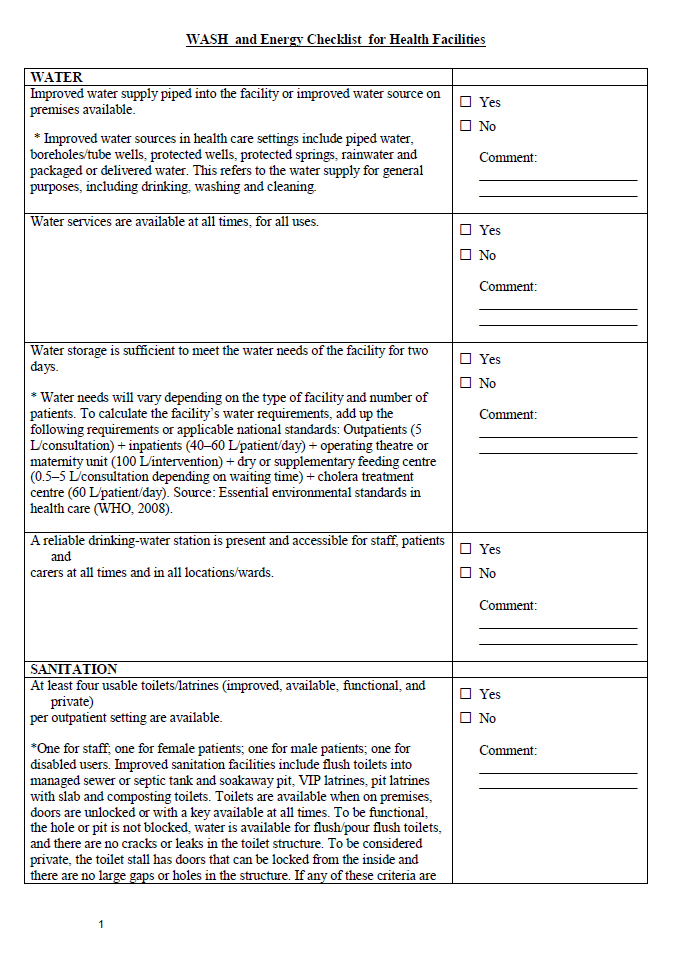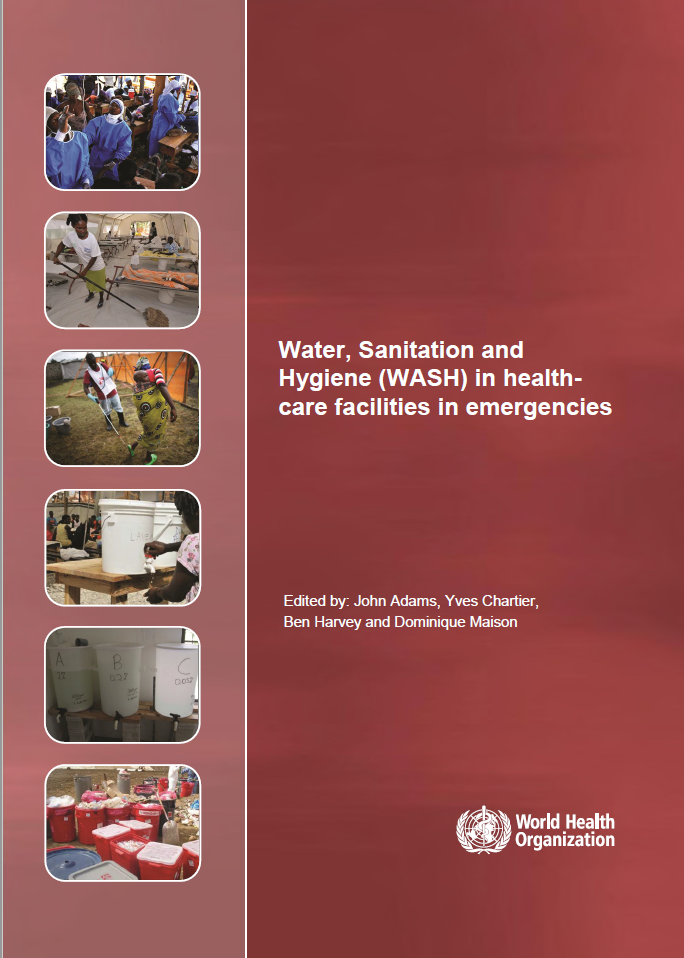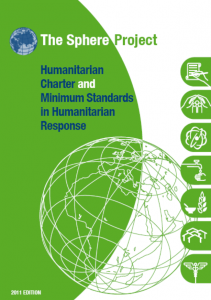
This handbook has been written with the specific objective of providing practical guidance and an overview of vector control in emergency situations for relief workers and local personnel. It will enable them to develop the skills required to plan and implement a vector control project in an emergency situation, where there is a vector-borne disease epidemic, or where the risk of an epidemic is high.

The following document describes a complete description of common disease vectors along their control methods with a focus on low costs settings.

A WASH and Energy Checklist for rapid assessments of Health Facilities in refugee contexts.

This document contains recommendations for setting minimum Water, Sanitation and Hygiene (WASH) standards in health-care facilities in emergencies in order to provide an adequate and safe level of health-care in addition to minimizing the risk of health-care facility related infection for patients, staff and carers.

The Sphere Handbook is one of the most widely known and internationally recognized sets of common principles and universal minimum standards for the delivery of quality humanitarian response.
Tags: Environment. Organisations: SPHERE.

This document describes UNHCR’s global strategy for public health through a set of guiding principles and strategic approaches including protection; age, gender and diversity; equity; access; sustainability; community empowerment; appropriateness and reliability; partnerships and coordination; capacity building; communication and advocacy; integrated approaches; measurement and monitoring; and innovation. The document describes strategic objectives and enabling actions per sub-sector (Public Health, HIV and Reproductive Health, Food Security and Nutrition, and WASH).

A summary of UNHCR water, excreta management, solid waste management, disease vector control and hygiene promotion standards and indicators for emergency and post emergency refugee settings including means of verification.

The UNHCR WASH Manual is a comprehensive and authoritative reference document for WASH interventions in refugee settings, built upon the experience of UNHCR and WASH organisations.
Tags: Bloody Diarrhoea, Communicable Disease Control, Community Led Total Sanitation (CLTS), Desludging and Excreta Transportation, Excreta / Urine ReUse, Excreta Composting, Hygiene Behaviour Change, Landfill Management, Malaria, Medical Waste Management, Medical Waste Management, Medical Waste Management, Menstruation Hygiene Management, Menstruation Hygiene Management, Public Health, Public Health, Public Health, Public Health, Public Health, Sewerage and Excreta Conveyance, Waste Recycling , Reuse and Reduction, Water Prospection and Investigation, Water Pumping, Water Safety Plans, Water Safety Plans, and Watery Diarrhoea.









